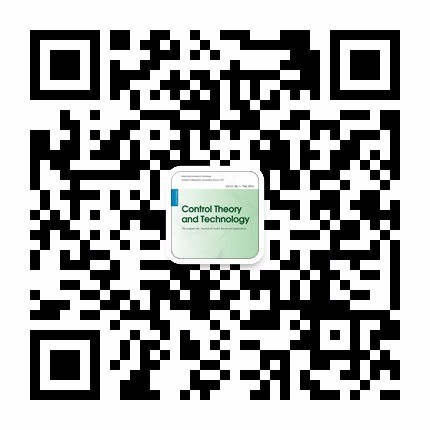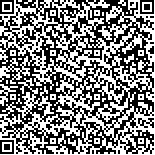| 摘要: |
| Dealing with a large-scaled system as multi-agent system is not a new methodology in system control field. The root of multi-agent system is longer than half century, however, it is recently spotlighted again due to the needs of theoretical tools for dealing with large-scale system such as smart city, global behavior of traffic system, networked systems, and machine learning. Common characteristic of this kind of systems is that the whole system consists of a larger number of autonomous agents which are coupled and connected each other, and the individual agent is under local control but it accomplishes a task as the whole system. This collection of research papers is from the submissions to the special issue with title ``multiagent-based system modeling and control practices''. The aim of the special issue is to provide a stage for both of theorists and practitioners in this field to exchange challenging results in new issues, especially biological, bio-inspired systems, mean-field game, and connected network systems.
The collection is divided as three groups: The survey paper by K. Hou et al. presented an overview on recent advances in control and communication of multi-robot swarms. A biomolecular control scheme is proposed in the paper by P. Rong and T. Nakakuki which demonstrated how the dynamic DNA nanotechnology can be used in system control field. The last brief paper of this group is from S. Azuma which discussed the network structure for Boolean network systems. The second group includes three case studies from the view of creating new theoretical tools. The paper by T. Wang et al. proposed an online iterative algorithm for solving multi-agent dynamic graphical games which showd the possibility of online solution of Bellman equation. Y. Du et al. presented in their paper a distributed scheme for ensemble learning under a diffusion strategy which aimed to the classification problem on big data. The paper by Z. Lu et al. addressed a mixed-triggered finite-time non-fragile filtering problem for interval type-2 T-S fuzzy network control systems. The last group of this collection includes three papers with practical background. The paper by J. Zhang and F. Xu investigated the problem of minimizing energy consumption for connected hybrid electric vehicles, and the paper from Q. Fu et al. presented a challenge of applying mean-field game theory to achieve speed consensus for the vehicle driving in a large-scale traffic flow. Targeted on the alternative transportation devices, high-speed train with connected real-time traffic information is addressed in the paper by D. He et al. with energy-efficient receding horizon trajectory planning method. |
| 关键词: |
| DOI:https://doi.org/10.1007/s11768-020-9207-1 |
|
| 基金项目: |
|
| Editorial: Special issue on multiagent-based system modeling and control practices |
| Takashi NAKAKUKI,Tielong SHEN,Shunsyoku KANAE |
| (Kyushu University of Technology, Japan;Sophia University, Japan;Junshin Gaguen University, Japan) |
| Abstract: |
| Dealing with a large-scaled system as multi-agent system is not a new methodology in system control field. The root of multi-agent system is longer than half century, however, it is recently spotlighted again due to the needs of theoretical tools for dealing with large-scale system such as smart city, global behavior of traffic system, networked systems, and machine learning. Common characteristic of this kind of systems is that the whole system consists of a larger number of autonomous agents which are coupled and connected each other, and the individual agent is under local control but it accomplishes a task as the whole system. This collection of research papers is from the submissions to the special issue with title ``multiagent-based system modeling and control practices''. The aim of the special issue is to provide a stage for both of theorists and practitioners in this field to exchange challenging results in new issues, especially biological, bio-inspired systems, mean-field game, and connected network systems.
The collection is divided as three groups: The survey paper by K. Hou et al. presented an overview on recent advances in control and communication of multi-robot swarms. A biomolecular control scheme is proposed in the paper by P. Rong and T. Nakakuki which demonstrated how the dynamic DNA nanotechnology can be used in system control field. The last brief paper of this group is from S. Azuma which discussed the network structure for Boolean network systems. The second group includes three case studies from the view of creating new theoretical tools. The paper by T. Wang et al. proposed an online iterative algorithm for solving multi-agent dynamic graphical games which showd the possibility of online solution of Bellman equation. Y. Du et al. presented in their paper a distributed scheme for ensemble learning under a diffusion strategy which aimed to the classification problem on big data. The paper by Z. Lu et al. addressed a mixed-triggered finite-time non-fragile filtering problem for interval type-2 T-S fuzzy network control systems. The last group of this collection includes three papers with practical background. The paper by J. Zhang and F. Xu investigated the problem of minimizing energy consumption for connected hybrid electric vehicles, and the paper from Q. Fu et al. presented a challenge of applying mean-field game theory to achieve speed consensus for the vehicle driving in a large-scale traffic flow. Targeted on the alternative transportation devices, high-speed train with connected real-time traffic information is addressed in the paper by D. He et al. with energy-efficient receding horizon trajectory planning method. |
| Key words: |

